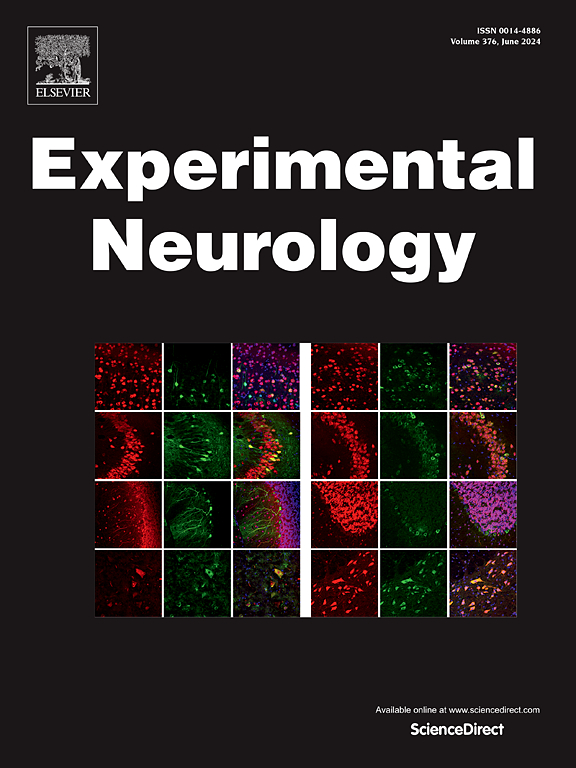Circulating exosomes in pediatric obstructive sleep apnea with or without neurocognitive deficits and their effects on a 3D-blood-brain barrier spheroid model
IF 4.6
2区 医学
Q1 NEUROSCIENCES
引用次数: 0
Abstract
Obstructive sleep apnea (OSA) in children is linked to cognitive impairments, potentially due to blood-brain barrier (BBB) dysfunction. Exosomes, small vesicles released by most cells, reflect cellular changes. This study examined the effects of exosomes from children with OSA, with or without cognitive deficits, on neurovascular unit (NVU) models. Twenty-six children were categorized into three groups: healthy controls (Cont, n = 6), OSA without cognitive deficits (OSA-NG, n = 10), and OSA with neurocognitive deficits (OSA-POS, n = 10). Plasma exosomes were characterized and applied to human 3D NVU spheroids for 24 h. Barrier integrity, permeability, and angiogenesis were assessed using trans-endothelial electrical resistance (TEER), tight junction integrity, and tube formation assays. Single-nucleus RNA sequencing (snRNA-seq) and bioinformatics, including CellChat analysis, identified intercellular signaling pathways. Results showed that exosomes from OSA-POS children disrupted TEER, increased permeability, and impaired ZO1 staining in spheroids, compared to the other groups. Both OSA-POS and OSA-NG exosomes increased permeability in NVU cells in monolayer and microfluidic BBB models. snRNA-seq analysis further revealed distinct cell clusters and pathways associated with the different groups. This 3D NVU spheroid model provides a robust platform to study BBB properties and the role of exosomes in OSA. These findings suggest that integrating snRNA-seq with exosome studies can uncover mechanisms underlying neurocognitive dysfunction in pediatric OSA, potentially leading to personalized therapeutic approaches.
求助全文
约1分钟内获得全文
求助全文
来源期刊

Experimental Neurology
医学-神经科学
CiteScore
10.10
自引率
3.80%
发文量
258
审稿时长
42 days
期刊介绍:
Experimental Neurology, a Journal of Neuroscience Research, publishes original research in neuroscience with a particular emphasis on novel findings in neural development, regeneration, plasticity and transplantation. The journal has focused on research concerning basic mechanisms underlying neurological disorders.
 求助内容:
求助内容: 应助结果提醒方式:
应助结果提醒方式:


